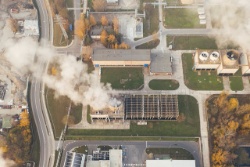Where have all the butterflies gone?
PRESS RELEASE
for immediate
release
Where have all the butterflies
gone?
Ever wonder where Monarch butterflies go for the winter?
This year many schoolchildren will be finding out where; they will be on the lookout for their butterflies having tagged them as part of a national science project.
Scientists know that if we are to conserve species effectively it is vital we monitor how they are faring. And schools involved in the national science project devised by the NZ Association of Primary Science Educators (NZAPSE) will be tagging their overwintering Monarchs – and keeping watch to learn where they overwinter.
“The status of our flora and fauna depends on the effects of climate change, pollution, alien species and land management,” Jacqui Knight, Secretary of the Trust said. “We need to know more about our insects to predict the impacts of such change, and to develop an appropriate response. We’re thrilled to have more schools participating.”
Butterflies are uniquely placed to act as indicators of environmental change.
“Especially Monarchs, as they are large and colourful, very easy to see.”
“By tagging and following Monarchs we can use them as indicators of the status of our environment here in NZ,” said Chris Astall, National Coordinator NZAPSE. “I am excited that the focus for the 2012 National Primary Science Week experiment will be engaging children in collecting data for such a critical project. By taking part, children will have the opportunity to develop skills and experience a science investigation that has real purpose. I hope schools from all over NZ can get involved and collect data.”
Monarch butterflies typically form large clusters, sometimes containing hundreds or thousands of butterflies, on trees in well-sheltered areas during the colder winter months. Until the Trust started tracking Monarchs there was little research being done as to why some New Zealand butterfly species are retreating from urban areas.
“The last generation of Monarchs each summer forms the breeding stock for next year’s population,” said Jacqui. “Even though they are sexually mature, it isn’t until the onset of spring that a return to gardens, mating and breeding is triggered.”
Data is needed on other butterflies and moths too such as the Forest Ringlet and Red Admirals. Entomologists are concerned about NZ’s endemic Lepidoptera – and anyone can help by reporting sightings of all butterflies and day-flying moths on the Trust’s website.
Over the autumn and winter tiny, white tags are applied to the hindwing of each Monarch. Each tag bears the Trust’s website address and a unique number, but are virtually weightless.
“The weight is equivalent to that of our car keys or mobile phone is to us,” said Jacqui.
It is hoped that the butterflies will be subsequently seen in overwintering places and people will report the tag number and location to the website of the Trust.
“We are keen to involve gardeners, nature-lovers, trampers, and home-schooled children in this project,” she said. “Anyone and everyone is able to participate – it is absolutely free.”
All the information needed to register is on the Monarch Butterfly NZ Trust website: www.monarch.org.nz.


 Brewers Association: Brewers Association Of New Zealand Supports Modernisation Of Alcohol Legislation
Brewers Association: Brewers Association Of New Zealand Supports Modernisation Of Alcohol Legislation Commerce Commission: ComCom Warns Of Pyramid Schemes After South Auckland Scammers Plead Guilty
Commerce Commission: ComCom Warns Of Pyramid Schemes After South Auckland Scammers Plead Guilty MBIE: MBIE Publish Mid-Point Review Of The Phase-Out Of The Low Fixed Charge (LFC)
MBIE: MBIE Publish Mid-Point Review Of The Phase-Out Of The Low Fixed Charge (LFC) Science Media Centre: Company Claims To Have “De-Extincted” The Dire Wolf – Expert Reaction
Science Media Centre: Company Claims To Have “De-Extincted” The Dire Wolf – Expert Reaction Stats NZ: Greenhouse Gas Emissions Fall 2.0 Percent In The December 2024 Quarter
Stats NZ: Greenhouse Gas Emissions Fall 2.0 Percent In The December 2024 Quarter The Reserve Bank of New Zealand: Christian Hawkesby Appointed As Governor Of The RBNZ
The Reserve Bank of New Zealand: Christian Hawkesby Appointed As Governor Of The RBNZ



